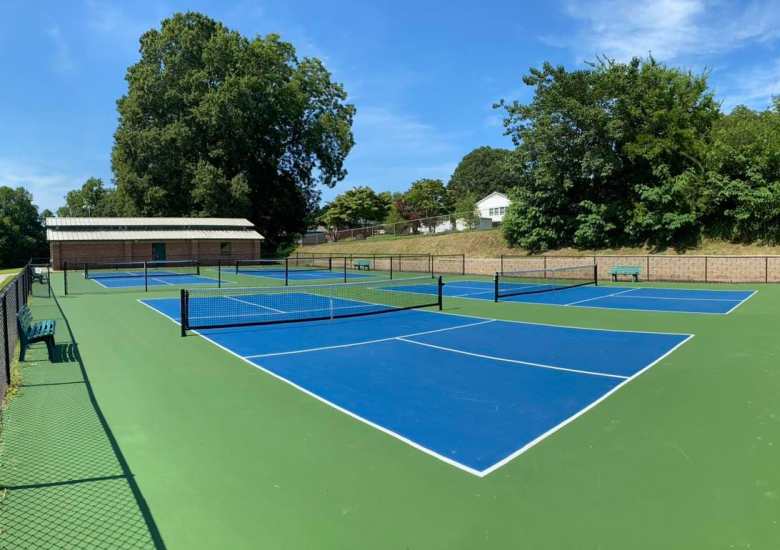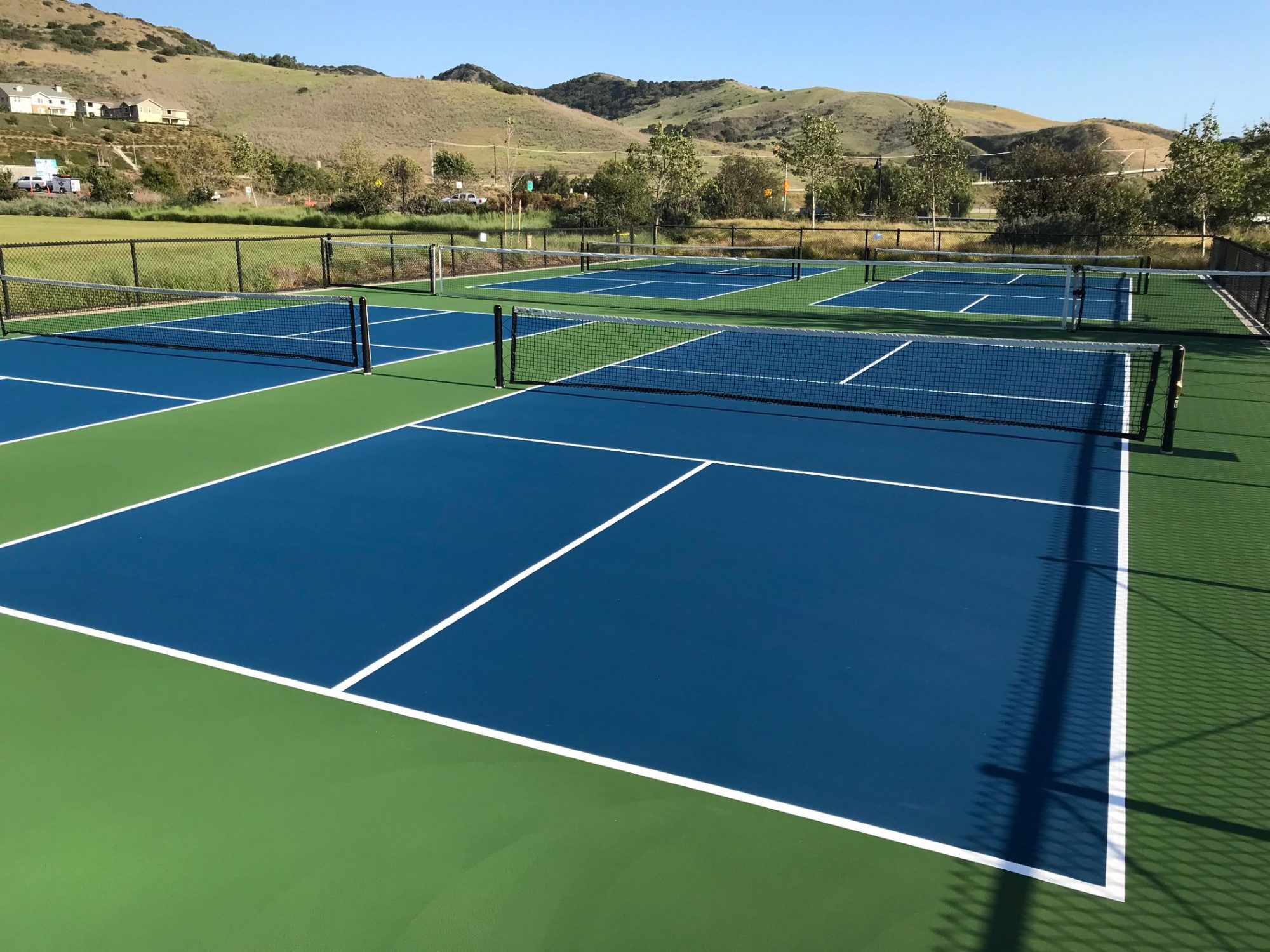Common Mistakes to Avoid in Your Pickleball Court Construction Process
Boost Citizen Involvement With Community-Driven Pickleball Court Projects
The appearance of community-driven pickleball court tasks provides a distinct chance to promote local engagement and reinforce community connections. By proactively involving residents in the preparation and implementation phases, such initiatives not only produce leisure spaces but also promote a shared feeling of ownership. Comprehending the actions to launch these projects, consisting of reliable stakeholder engagement and resource allotment, is important. The actual question remains: exactly how can these grassroots efforts be strategically implemented to guarantee sustainability and inclusivity in varied communities? Checking out successful instance studies might provide the understandings needed to address this crucial problem.
Significance of Neighborhood Involvement
Neighborhood engagement is a crucial element in the effective development of pickleball court jobs, as it cultivates a feeling of possession and cumulative responsibility amongst residents. When area members are actively included in the preparation and application phases, they are more likely to support for the task's long-term success. Involving stakeholders such as local players, households, and recreational groups makes sure that the centers fulfill the diverse needs and preferences of the neighborhood.
In addition, area involvement cultivates an encouraging environment where homeowners feel empowered to contribute their ideas and resources. Pickleball court construction. This joint method can lead to ingenious remedies that boost the design and performance of the courts, making them much more appealing to a broader audience. In addition, including citizens in decision-making procedures can strengthen social ties, promoting inclusivity and unity within the neighborhood
The exposure of area support for a pickleball project can likewise play a pivotal function in securing financing and authorization from neighborhood authorities. By demonstrating a common dedication to recreational development, areas can successfully support for sources and policy changes that prefer the facility of pickleball courts, inevitably improving the regional culture and leisure landscape.
Steps to Start a Job
Launching a pickleball court project calls for an organized method that improves the foundation of area involvement developed in previous conversations. The very first action is to put together a task board making up neighborhood stakeholders, enthusiasts, and reps from appropriate organizations. This varied team ensures that numerous viewpoints are thought about.
Following, conduct a demands analysis within the community. Studies, emphasis groups, and public meetings can be reliable in gauging passion and gathering input on prospective court locations, wanted features, and scheduling preferences. Following this, create a job strategy laying out duties, timelines, and purposes.
Once the strategy remains in location, engage with local authorities to understand zoning regulations and any type of essential licenses. Interacting transparently with the area throughout this process is crucial, as it cultivates trust and urges additional participation.
Furthermore, arranging community events can assist preserve momentum and interest. These events can work as platforms for additional discussion and assistance to strengthen community connections. Last but not least, record every step taken and preserve in-depth documents, as this will certainly be advantageous for future stages of the project, including funding and source procurement.
Funding and Resources Available
Safeguarding funding and resources for a pickleball court project is frequently a crucial step that can determine the job's usefulness and success. Various avenues exist for obtaining economic support, ranging from public funding to private sponsorships. City government grants, frequently targeted at advertising area health and entertainment, can offer considerable financial backing for such initiatives.
Along with government resources, nonprofit companies and foundations often use gives particularly for sporting activities and community growth jobs. Engaging regional companies as enrollers can additionally be a productive method; several business are excited to buy neighborhood campaigns that boost their company social responsibility account.
Crowdfunding systems have actually emerged as a viable choice for grassroots fundraising, allowing neighborhood members to add straight to the job. This strategy not only raises funds however likewise fosters a feeling of possession amongst individuals.
Layout and Planning Factors To Consider
Effective layout and planning are basic elements of any kind of successful pickleball court task complying with the procurement of financing and resources. A comprehensive evaluation of the recommended location is crucial; this consists of analyzing access, closeness to existing community features, and the possibility for visibility and interaction.
The format of the click reference court should abide by main dimension specs while thinking about the bordering environment. Incorporating functions click for source such as seating, color structures, and proper illumination can substantially improve player experience and viewer enjoyment. Products selected for the court surface area ought to focus on resilience and safety and security, with alternatives like acrylic or asphalt offering optimum efficiency.
Including area members in the design process fosters a sense of possession and ensures that the center satisfies neighborhood demands - Pickleball court construction. This can be attained through public appointments and surveys, allowing stakeholders to share their choices and worries
Sustainability must also be a concern; incorporating green materials and methods can contribute to long-term feasibility. Finally, producing a maintenance plan to make certain the court remains in excellent condition will certainly support recurring area involvement and participation in pickleball tasks.

Success Stories and Instance Research Studies
Highlighting the transformative influence of community-driven efforts, a number of success tales show how joint efforts have actually resulted in the advancement of vibrant pickleball courts throughout different regions. One notable instance is the initiative in a small town in Florida, where citizens banded together to transform an underutilized tennis court into a committed pickleball facility. With fundraising events and partnerships with neighborhood companies, the neighborhood increased adequate funds to mount brand-new webs, resurfacing, and lines, ultimately fostering a vibrant center for regional gamers.
Similarly, in a suburban location of The golden state, a grassroots motion arised to create pickleball courts in a regional park. The project not only engaged volunteers for building yet likewise included workshops to engage area participants in the sporting activity. As a result, the courts ended up being a centerpiece for social interaction and index physical fitness, bring in players of every ages.
These situation studies exhibit exactly how community-driven jobs can boost local interaction, promote physical task, and strengthen social bonds. By leveraging cumulative resources and interest, areas can effectively develop and maintain pickleball facilities that serve diverse populaces and foster a feeling of belonging.

Conclusion
By prioritizing stakeholder participation throughout the planning and implementation phases, these initiatives can efficiently deal with varied neighborhood demands. Ultimately, such efforts contribute to the change of public areas right into vibrant centers of physical fitness and social interaction, enhancing neighborhood ties.
The emergence of community-driven pickleball court projects presents a distinct opportunity to foster regional involvement and strengthen community ties.Area involvement is a critical aspect in the effective development of pickleball court projects, as it cultivates a feeling of ownership and cumulative obligation amongst citizens. When community participants are actively involved in the preparation and application stages, they are more likely to promote for the project's long-term success.Starting a pickleball court job requires an organized technique that builds on the foundation of area engagement established in previous discussions. The project not only engaged volunteers for building and construction yet also included workshops to engage community participants in the sporting activity.